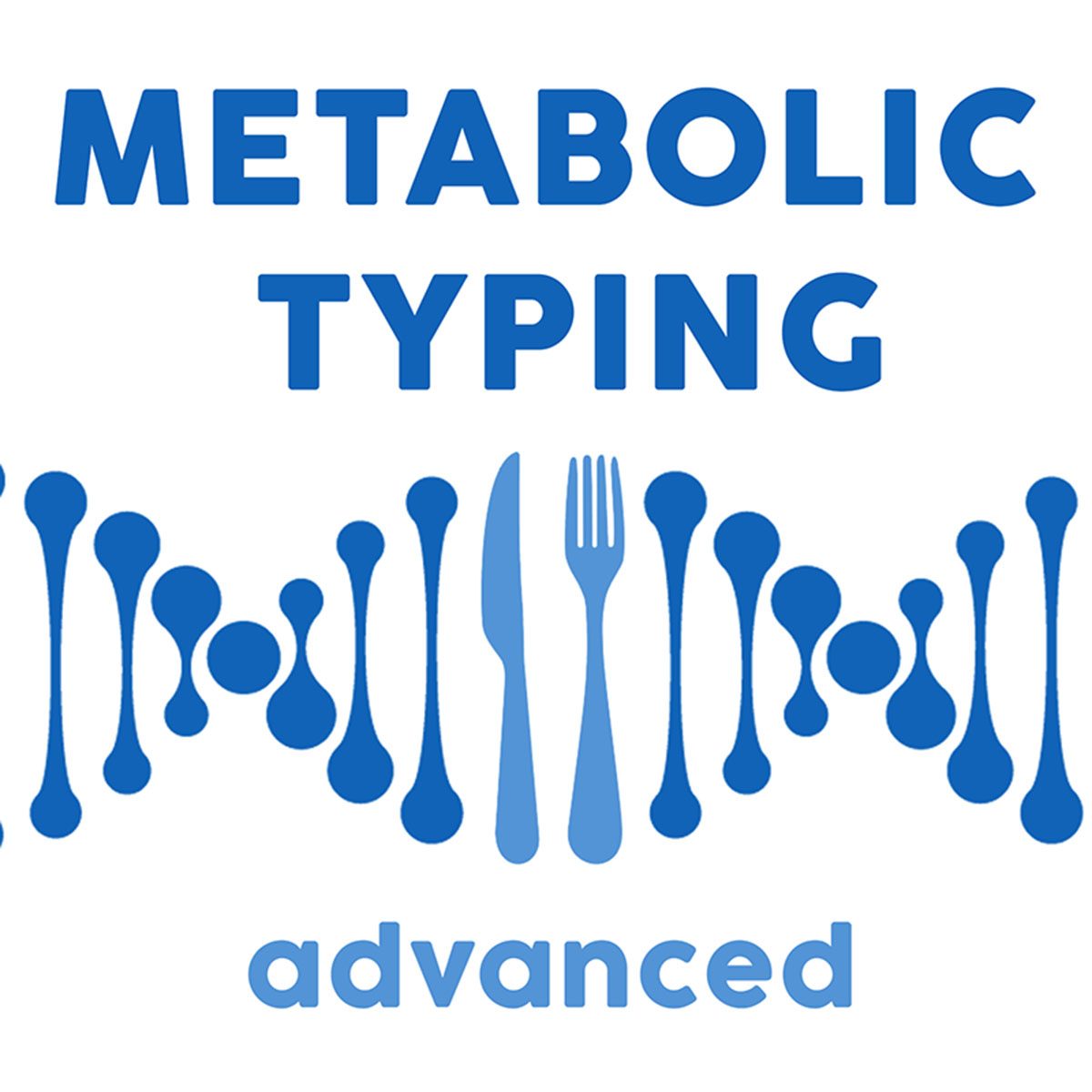No products in the cart.
Metabolic Diets
by Walter Last
Slow oxidizers, also called Carbohydrate Types, have similar dietary requirements to those of the metabolic S-type – that is, a vegetarian or semi-vegetarian diet. Fast oxidizers and P-type individuals or Protein Types, on the other hand, do best on a non-vegetarian diet or a high legume vegetarian diet, which at the same time should be low in sugars. The balanced type may use a mixed diet that is neither very high in protein and fat or in sweet food.
S-TYPE AND SLOW OXIDIZERS
Proteins should be supplied mainly from legumes, almonds and other oily seeds best as seed cheese, but the consumption of peanuts should be restricted. Fish and other seafood, eggs (not hard-boiled or fried), some poultry and raw milk products are usually acceptable. Have plenty of fruits, especially tart varieties, frequent fruit meals and fruit days. Also sweet varieties of vegetables are beneficial, particularly red beets, and sprouted seeds.
Polyunsaturated oils are mainly supplied from seafood, fermented soybeans, sunflower kernels and freshly ground linseed. Meats, fats and processed oils should be eaten sparingly. The evening meal should be light. Helpful supplements are lecithin, digestive enzymes, cod liver oil or other fish oils, kelp, B vitamins, vitamin E, ascorbic acid, magnesium, potassium, chromium, copper, selenium and zinc. The idea is to eat fast-digesting food.
P-TYPE AND FAST OXIDIZERS
A diet high in legumes often combined with brown rice and other grains such as millet and buckwheat, also sago taro and tapioca. Have a hearty breakfast. Flesh foods are generally well tolerated. This metabolic type should use whole grains – sprouted, cooked or baked, in preference to flour products; plenty of sprouted seeds. Starchy and green vegetables are best for cooking, use sweet varieties mainly raw, with plenty of red beets, raw, cooked or juiced. Use salted food if the blood pressure is low.
Oils low in linoleic acid should be used – best are olive oil and almond oil, also try coconut oil. The intake of sweet food, sweet and acid fruits and lactose products should be minimized. Neutralize fruit acids with dolomite. Useful supplements are halibut liver oil capsules, calcium ascorbate, low-level B vitamins, MSM, chromium, copper, selenium and zinc. The idea is to eat slow-digesting food.
SUB-OXIDIZERS
These may use a mixed diet of easily digestible food. Thus meat may be used as broth or stew, not fried or roasted. Nuts and oily seeds should be soaked, sprouted or used as seed cheese. Sub-oxidizers may consume sprouted seeds, plenty of grass juice; also beef juice and freeze-dried liver. Digestive enzymes, hydrochloric acid supplement or ascorbic acid with protein meals should be used. All vitamins and minerals should be supplemented, especially trace minerals; mix lecithin with all meals; rubbing the skin with cod liver oil may be helpful. The idea is to eat easily digested food.
SENSITIVITY REGULATION
Certain nutrients make the skin and sometimes the brain more sensitive and should be minimized if the skin easily reacts to irritants and if there is emotional and mental instability. These sensitizing nutrients are: acid and sweet foods and fruits, allergens and a diet high in phosphorus and low in calcium and magnesium. Conversely, proteins, fats and oils, complex carbohydrates, green vegetables, calcium and magnesium help to protect susceptible individuals from undue sensitivity.
Insensitive individuals, on the other hand, benefit from a high intake of acid foods and fruits, lecithin, folic acid and a diet low in calcium but high in magnesium. Common polyunsaturated oils increase sensitivity, and lecithin, linolenic acid (linseed) and fish oils normalize it.
METABOLIC TYPES AND BLOOD GROUPS
Peter D’Adamo wrote the book ‘Eat Right For Your Type’ or ‘The Eat Right Diet’ (Random House) which shows that individuals with different blood groups have different optimal food requirements. Special proteins called lectins, in foods that were not traditionally eaten, frequently cause immune reactions in the intestinal wall and may eventually lead to a wide variety of diseases.
The relationship between the three basic metabolic types and blood groups is rather straightforward. Blood group O is the oldest blood group. It originated in the hunter-gatherer area and corresponds to the P-type or non-vegetarian type with a high requirement for protein and fat. Group A resembles most closely the S-type or seed-eating vegetarian type, while B is the lacto-vegetarian type, and closest to the balanced metabolic type. Blood group AB has the characteristics of A as well as B.
It is my opinion that it is beneficial to know which foods are good or bad for our blood type, but not necessarily stick religiously to the food tables. Some of the foods listed to be avoided do not actually agglutinate or damage our blood and have been selected for other reasons that may not apply to you. Furthermore, I recommend for everyone, especially if not in good health, making food allergy tests and avoid any reacting food, while non-reacting foods may be regarded as safe.
Therefore, if symptoms of food sensitivity show up, then I would not use a food that is supposed to be beneficial according to our blood group, while I would use a food that is classified as “avoid” by D”Adamo if it does not show a negative effect. An example of this is coconut and its products, which D’Adamo advises to avoid for all blood groups. However, I find coconut milk and oil beneficial for myself, and many others find it beneficial as well. I also use a lot of fresh aloe vera, which supposedly is bad for my blood group.
While we can expect most allergies to occur to food that is wrong for our blood type, this is not always so. As mentioned before, not all foods are classified as ‘avoid’ because of lectins causing problems. Even if there is a reaction with our blood group, this has only been established in a test tube. What happens in our body depends mainly on the quality of our digestive system and on the quantity and digestibility of the questionable food and its interaction with other food ingredients.
Also cooked foods often react different to raw foods. Sprouted seeds appear to be more acceptable and possibly beneficial even if the same seeds should be avoided in cooked form. If all is well, then the potentially harmful lectins are broken down to amino acids and are harmless, if not, then we must improve conditions or avoid them. Try to develop your inner food sense and learn to listen to your body. It will then let you know by your inner urgings and taste preferences which foods to eat.
The following table shows a short list of some common foods in relationships to the blood groups. Basically there are only two food classifications, those foods that give a reaction and should be avoided and those that do not react and may be eaten. However, Peter D’Adamo made an additional value judgment by classifying the allowed foods as either neutral/avoid, neutral, neutral/beneficial or beneficial, mainly in regard to overweight. Neutral means that the food does not cause any blood group related problems but has no other advantages to specifically recommend it. I do not always agree with these additional classifications, and have restricted the classifications to “O.K.” and “Avoid”. For further information see Peter D’Adamo’s book or his web site at www.dadamo.com.
Food List for Blood Groups
| Food | Type A | Type AB | Type B | Type O |
| Almond | O.K. | O.K. | O.K. | O.K. |
| Apple | O.K. | O.K. | O.K. | O.K. |
| Avocado | O.K. | Avoid | Avoid | Avoid |
| Bacon/ham/pork | Avoid | Avoid | Avoid | Avoid |
| Banana | Avoid | Avoid | O.K. | O.K. |
| Barley | O.K. | O.K. | Avoid | O.K. |
| Beef | Avoid | Avoid | O.K. | O.K. |
| Beetroot/red beet | O.K. | O.K. | O.K. | O.K. |
| Beer | Avoid | O.K. | O.K. | O.K. |
| Brazil nut | Avoid | O.K. | O.K. | Avoid |
| Broccoli | O.K. | O.K. | O.K. | O.K. |
| Brussels Sprouts | O.K. | O.K. | O.K. | Avoid |
| Buckwheat | O.K. | Avoid | Avoid | O.K. |
| Cabbage | Avoid | O.K. | O.K. | Avoid |
| Carrot | O.K. | O.K. | O.K. | O.K. |
| Cashew | Avoid | O.K. | Avoid | Avoid |
| Cauliflower | O.K. | O.K. | O.K. | Avoid |
| Celery | O.K. | O.K. | O.K. | O.K. |
| Cheese (most types) | Avoid | O.K. | O.K. | Avoid |
| Corn/maize | O.K. | Avoid | Avoid | Avoid |
| Cottage Cheese | Avoid | O.K. | O.K. | Avoid |
| Cucumber | O.K. | O.K. | O.K. | O.K. |
| Duck | Avoid | Avoid | Avoid | O.K. |
| Egg | Avoid | O.K. | O.K. | O.K. |
| Flax seed | O.K. | O.K. | O.K. | O.K. |
| Garbanzo Beans | Avoid | Avoid | Avoid | O.K. |
| Grapes | O.K. | O.K. | O.K. | O.K. |
| Herring (fresh) | Avoid | O.K. | O.K. | O.K. |
| Kidney beans | Avoid | Avoid | O.K. | Avoid |
| Lamb/mutton | Avoid | O.K. | O.K. | O.K. |
| Lemon | O.K. | O.K. | O.K. | O.K. |
| Lentils | O.K. | O.K. | Avoid | Avoid |
| Lima beans | Avoid | Avoid | O.K. | O.K. |
| Liver (calf) | Avoid | O.K. | O.K. | O.K. |
| Lobster | Avoid | Avoid | Avoid | O.K. |
| Mackerel | O.K. | O.K. | O.K. | O.K. |
| Milk, cow | Avoid | Avoid | O.K. | Avoid |
| Milk, goat | O.K. | O.K. | O.K. | Avoid |
| Millet | O.K. | O.K. | O.K. | O.K. |
| Mung beans | O.K. | Avoid | Avoid | O.K. |
| Mussels | Avoid | O.K. | Avoid | O.K. |
| Navy beans | Avoid | O.K. | O.K. | Avoid |
| Oats | O.K. | O.K. | O.K. | O.K. |
| Octopus | Avoid | Avoid | Avoid | Avoid |
| Olive oil | O.K. | O.K. | O.K. | O.K. |
| Onion | O.K. | O.K. | O.K. | O.K. |
| Orange | Avoid | Avoid | O.K. | Avoid |
| Oyster | Avoid | Avoid | Avoid | O.K. |
| Pea | O.K. | O.K. | O.K. | O.K. |
| Papaw | Avoid | O.K. | O.K. | O.K. |
| Peach/Pear | O.K. | O.K. | O.K. | O.K. |
| Peanut | O.K. | O.K. | Avoid | Avoid |
| Pineapple | O.K. | O.K. | O.K. | O.K. |
| Plum | O.K. | O.K. | O.K. | O.K. |
| Potato, sweet | Avoid | O.K. | O.K. | O.K. |
| Potato, white, red | Avoid | O.K. | O.K. | Avoid |
| Pumpkin | O.K. | O.K. | Avoid | O.K. |
| Rabbit | Avoid | O.K. | O.K. | O.K. |
| Rice | O.K. | O.K. | O.K. | O.K. |
| Rye | O.K. | O.K. | Avoid | O.K. |
| Salmon | O.K. | Avoid | Avoid | O.K. |
| Sardine | O.K. | O.K. | O.K. | O.K. |
| Sesame seed/Tahini | O.K. | Avoid | Avoid | O.K. |
| Soy bean | O.K. | O.K. | O.K. | O.K. |
| Spelt | O.K. | O.K. | O.K. | O.K. |
| Spinach | O.K. | O.K. | O.K. | O.K. |
| Strawberry | O.K. | O.K. | O.K. | Avoid |
| String bean | O.K. | O.K. | O.K. | O.K. |
| Sunflower seed | O.K. | Avoid | Avoid | O.K. |
| Tapioca | O.K. | Avoid | Avoid | O.K. |
| Tofu/Tempeh | O.K. | O.K. | Avoid | O.K. |
| Tuna | O.K. | O.K. | O.K. | O.K. |
| Turkey | O.K. | O.K. | O.K. | O.K. |
| Turnip | O.K. | O.K. | O.K. | O.K. |
| Walnut, English | O.K. | O.K. | O.K. | O.K. |
| Wheat | Avoid | O.K. | Avoid | Avoid |
| Yam | Avoid | O.K. | O.K. | O.K. |
| Yogurt | O.K. | O.K. | O.K. | Avoid |
| Zucchini | O.K. | O.K. | O.K. | O.K. |







